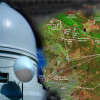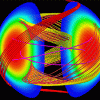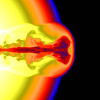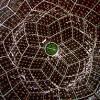Science News
NERSC Helps Nearby Supernova Factory Discover Supernovae at a Rate of 8 per Month
The Nearby Supernova Factory based at Berkeley Lab has discovered 34 supernovae during its first year of operation and 99 to date — the best performance ever for a "rookie" supernova search. This remarkable discovery rate of eight per month is made possible by a high-speed data link, custom data pipeline software, and NERSC's ability to store and process 50 gigabytes of data every night. Read More »
Improved Algorithm Speeds Up Fusion Code by a Factor of 5
Developers of the NIMROD code, which is used to simulate fusion reactor plasmas, collaborated with members of the SciDAC Terascale Optimal PDE Simulations Center to implement the SuperLU linear solver software within NIMROD. As a result, NIMROD runs four to five times faster for cutting-edge simulations of nonlinear macroscopic electromagnetic dynamics — with a corresponding increase in scientific productivity. Read More »
Scientists Find "Fingerprint" of Human Activities in Recent Tropopause Height Changes
A team of scientists, including Michael Wehner of LBNL's Computational Research Division, has determined that human-induced changes in ozone and well-mixed greenhouse gases are the primary drivers of recent changes in the height of the tropopause. The team is led by Ben Santer of LLNL and their work is described in a paper entitled, "Contributions of Anthropogenic and Natural Forcing to Recent Tropopause Height Changes," which appears in the July 25, 2003 edition of Science. Read More »
Simulation Computed at NERSC Matches Historic Gamma-Ray Burst
After three decades of scientific head-scratching, the origins of at least some gamma-ray bursts (GRBs) are being revealed, thanks to a new generation of orbiting detectors, fast responses from ground-based robotic telescopes, and a new generation of computers and astrophysics software. Read More »
New Computational and Scientific Results at NERSC: Science-of-Scale Applications Achieve Significant Results and up to 68% of Peak Performance on 10 Tflop/s IBM SP (3-10-03)
Initial results from NERSC’s 10 teraflop/s IBM SP supercomputer, which became available for general use in early March 2003, show scientific applications running at up to 68% of the system’s theoretical peak speed, compared with the 5–10% of peak performance typical for scientific applications running on massively parallel or cluster architectures. Read More »
NERSC Helps Get the Physics out of KamLAND Data
The Standard Model of Particle Physics, which has successfully explained fundamental physics since the 1970s, predicts that neutrinos have no mass and come in three types or "flavors," electron, muon, and tau. But for the past four years, solar neutrino experiments at the Super-Kamiokande Observatory (Super-K) in Japan and the Sudbury Neutrino Observatory (SNO) in Canada have offered compelling evidence that neutrinos do have nonzero mass and oscillate between the three flavors Read More »











